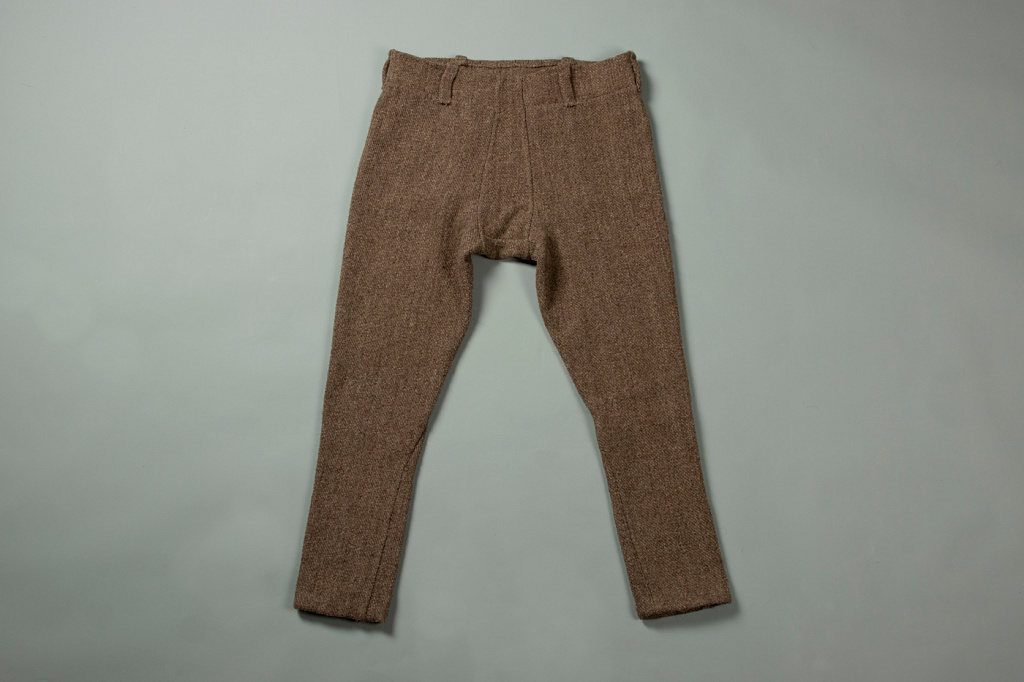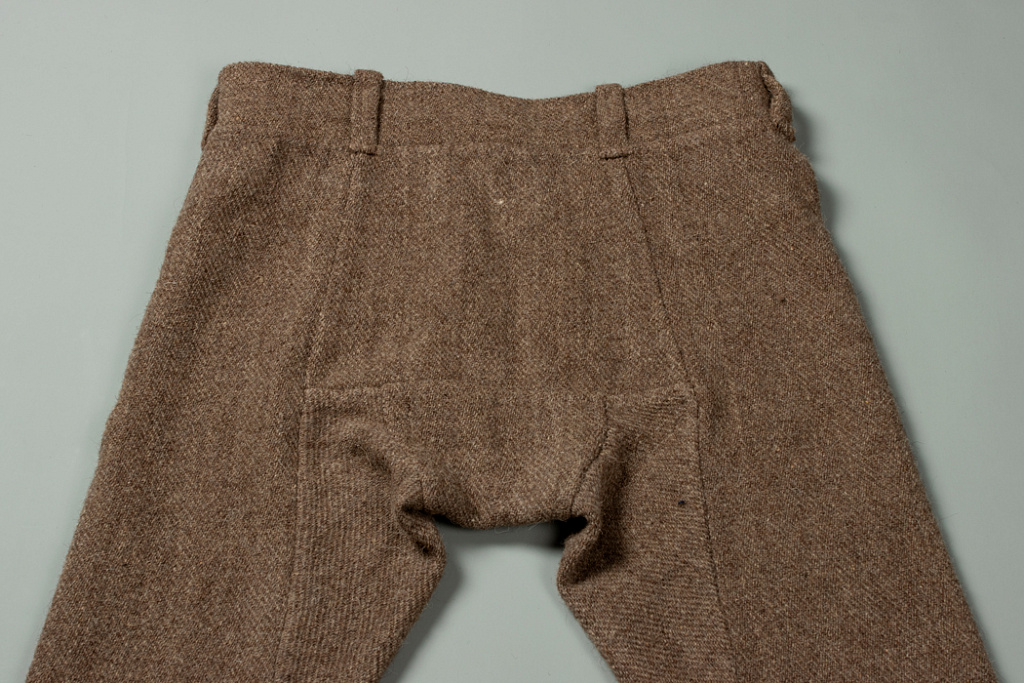Trousers from Thorsberg
Historical note
The Thorsberg moor is located in Germany in the state of Schleswig-Holstein. It is actually a bog lake that was a sacrificial site for the local western Germanic tribes. The sacrifices consisted of weapons, shields, horse harness, clothes, wooden objects, tools and jewelry. Many objects, weapons in particular, were “killed” before the offering. The first excavations of the Thorsberg moor took place in 1858-1861. Two pairs of trousers were found among other pieces of textile. These trousers are typically dated 1-3 century CE.
The first trousers (called 3684 in publications) lack the lower part of the right trouser leg, otherwise they have survived quite well. Judging by the size, the trousers’ owner was heavily built and above average height.
As for the cut, it may be said that the trousers consist of two trouser legs, with socks stitched to them, a belt, a trapezoid detail at the back and also one or two details at the front and at the crotch (pic. 1). Each trouser leg consists of a single large piece of fabric with a straight vertical warp. Between the trouser legs at the back side there is a large trapezoid, and at the front part a narrowing stripe that consists of two parts. The trousers also have a belt, it consists of two details. The belt’s left side is 4-7 cm wide (without seam), the warp is parallel to the waist. The belt’s right side is 7.5 cm wide, that makes an asymmetric middle part at the front of the trousers. It may be supposed that it occurred due to the lack of fabric or a cutting error. Both stripes of the belt, the hemmed one and the one with an edge, meet in the middle at the back. There are tunnel loops (belt loops) stitched at the belt, into which the belt was probably inserted. Two of them are attached at the front, two at the sides and two more at the back. Their lower ends reach a horizontal seam that connects the belt and the trouser legs. The tunnel loops’ upper ends are stitched from the inner side and are bent inside along the trousers’ edge. These tunnel loops are made in a very rough manner, from 2 to 4 cm wide (at front and at sides), the edges are not hemmed. There is a stripe of fabric wrapped around the ankle that is stitched to the lower edge of the trousers, it is 2 cm wide, and it is to this stripe that the sock is stitched. The sock consists of a single detail, the seam is located at the lower part of the foot.

Pic. 1
The trousers are made of thin reddish diamond weave twill 2/2. The density is 18-19/14 threads per cm. Each diamond has 14 warp yarns and 9 weft yarns. The upper fringe of the belt’s right detail has a woven edge. Anna Norgaard and Richard Stettiner mention that it was woven on 4 tablets.
All the seams are specific, they are called the “thorsberg type” in the articles. It was used in both the first and secound trousers, as well as the eponymous tunic. The trousers are sewn with wool threads, they are reddish like the fabric itself, yet a little more dark. The majority of seams are located inside, but the belt is stitched with seams outside. This fact allows supposing that the upper part of the trousers was turned outwards around the belt. The seam was hidden in case of wearing that way. This should be taken into account when cutting, because in straightened form (not turned up) the trousers have a very high fit. The seam ends at about 32 cm above the floor, and the trouser leg below remains open. The fabric futher at the calf is bent inside for about 2 cm.

Pic. 2
At about 6.5 cm from the top of the open part of the trouser leg and at 2.2 cm from the edge there is a thin bluish cord threaded into the fabric. At this place it is 4.5 cm long and has a knot at the end. Another 1.5 cm of this cord are located on the inside of the trousers, then it comes to the surface again, this time 5.5 cm long, further it isonce again tied into a knot at the end. Further at the trouser leg there is another cord. Its length is 3.5 cm, but this time it is tied right above the fabric. The hole through which it is threaded is closer to the edge of the fold than the previous ones, at 1.5 cm from it, i.e. within the twofold strip along the fold. All the cords pass only through one layer of fabric. Susan Moeller-Wiring supposes that the knots are not original, but were tied after excavation to fix the cords. It seems like the fabric was not subjected to loads when pulling the cords. This may be an argument against using the cords for closing the seams at calves, because regularly pulling them out would have to leave traces of the load on the fabric. The cords were supposedly decorative (like at the sides of the eponymous tunic).
Examples of our work






At the pictures above you can see trousers made of semi-coarse wool produced by us. The current example is made without the sock and is a base model of our catalog.
The version of trousers with the sock is also available for order. You can specify the preferred model in the comments to the order.
You can find out about the current availability of the handwoven fabric at the eponymous section of our catalog.
Make an order for sewing
